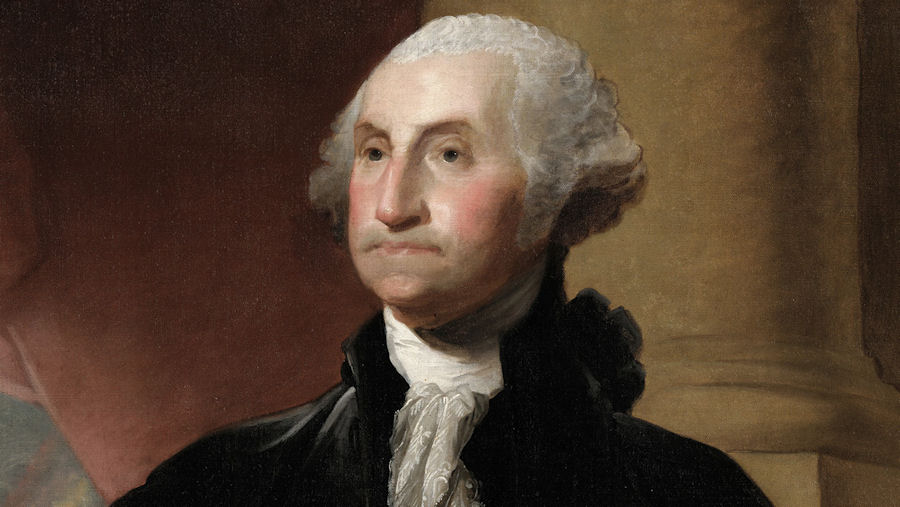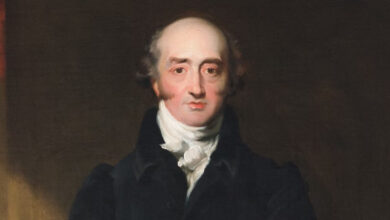
“The Constitution is the guide which I never will abandon” – George Washington
George Washington was born on 22 February 1732 in Westmoreland County, Virginia, USA. He is most well known for being the first president of the United States of America as well as for his influences in the Revolutionary War and the founding of an independent America. He also was responsible for the convention that led to the drafting of the US Constitution and so is also known as the father of his country.
George was born to Augustine and Mary Ball Washington and had six siblings who reached maturity, while three others died before adulthood. His father died when George was just eleven years old, and his oldest brother Lawrence became the father figure of the family. Unfortunately for George, he was not able to receive an education from England’s Applebee’s school like his brothers had. He did, however, study with a school run by an Anglican Church and his learning was also augmented by other tutors. In 1751 George and Lawrence undertook a trip to Barbados with the objective of improving Lawrence’s health as he had contracted tuberculosis. Unfortunately, the trip proved to be unsuccessful as Lawrence eventually died in 1752 after returning home to Mount Vernon.
At school, George Washington studied surveying. Gaining experience through a number of field trips, at the age of 17 he began to work towards becoming a professional surveyor and became the official surveyor for Culpeper County in Virginia.
George Washington began his military career during the French-Indian War which ran from 1754 and ended with the treaty of Paris in 1763. He was a major in the British militia for the province of Virginia. Both the British and the French wanted to control the Ohio Valley region since rivers like the Ohio were essential for the transport of goods produced in the region. When George Washington was twenty-one years old, Lieutenant Governor Robert Dinwiddie sent him to confront the French forces in the Ohio Valley. Major Washington was soon promoted to lieutenant colonel and was put in charge of approximately 160 men. He led his men back to the Ohio Valley in March 1754 with clear orders to capture or kill those who resisted him.
In 1758, after almost 5 years of setbacks and challenging combat, Washington achieved the ultimate objective of his mission and gained control of the Ohio for the British.
On 6 January 1759, George Washington married Martha Custis. Martha had children from a previous marriage – John and Patsy Custis – whom they raised together, never able to have any of their own children. George and Martha lived at Mount Vernon where he became a planter and politician. Martha was a wealthy widow, and their marriage made Washington one of Virginia’s most affluent men.
For leisure, Washington was interested in foxhunting, dances and parties, going to the theatre, and attending races. For a time, Washington put himself in debt by living an overly luxurious lifestyle, as well as having to deal with a poor tobacco market, which was one of his main sources of income. He managed to turn things around in 1766 when he turned away from tobacco in order to start producing wheat.
As he was now reliant upon the income that the land he owned could provide him, Washington found himself opposing the British due to the tax that parliament was imposing on the colonies, which essentially up to this point were implemented unopposed as the colonies had no representatives in the British government. In 1774, George Washington convened a Continental Congress and in August of that year, he was selected to be a delegate to the First Continental Congress. Thus began Washington’s rise in political circles.
The struggle of the colonies against the British government was one that could not just be fought through negotiation by politicians though and so Washington would return to the military to lead the colonies into the revolutionary war against the British. He is perhaps most well-known militarily for his crossing of the Delaware River on Christmas Day, 1776. The crossing led to George Washington having surprise on his side and the following morning, his troops launched an unexpected attack in Trenton, New Jersey where he took nearly 1,000 prisoners.
Another well-known point of the Revolutionary War was Washington’s troops’ stay at Valley Forge, Pennsylvania. Nearly a year later in December 1777, the Continental Army had experienced mass casualties in the camps due to disease, starvation, and hypothermia. As the situation at the camp worsened during the winter, Washington had to keep up the morale of the army – not an easy task, but one in which he succeeded.
After the war when America had gained independence from Britain, George Washington attended the Constitutional Convention in 1787, criticising the Articles of Confederation as too weak for a central government as he knew from experiences in the war how important a strong federal government is. Immediately preceding his presidency, the US Constitution was ratified by all thirteen states.
George Washington was president from 1789 to 1797. Being conscious of his role as the first president, he had to set a precedent and accepted a salary, realising that not everybody that followed him would likely be independently wealthy. He preferred the simple title Mr. President and retired in 1797.
Two years later on the morning of 13 December 1799, Washington became suddenly ill following a day on horseback in freezing conditions inspecting his land at Mount Vernon. Although attended by three different physicians over the next 36 hours, his condition deteriorated. George Washington died at 10 pm on 14 December at the age of sixty-seven. He has been honoured in countless ways as the founder of one of the most influential countries in the world and is considered a symbol of freedom by many. In Washington, DC, he’s memorialised by the Washington Monument and is currently featured on the US one dollar bill.




